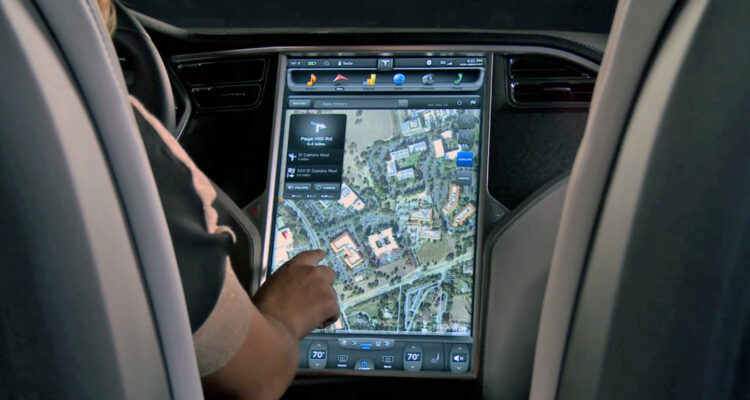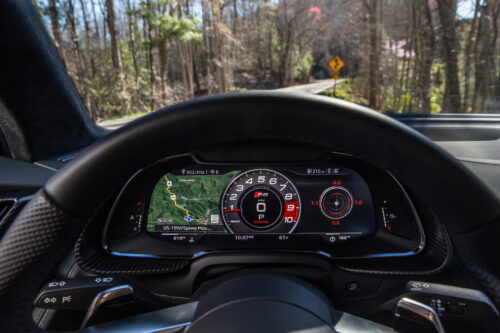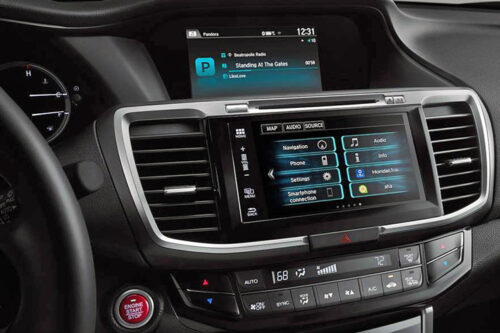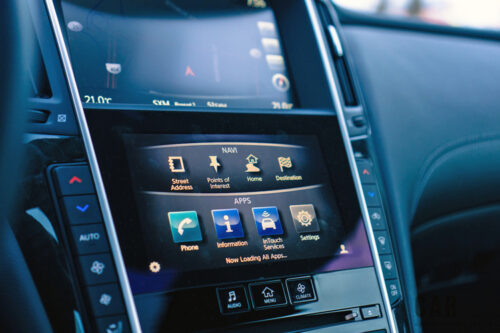We call this Exhaust Notes. It’s our chance to beat the drum, rattle the industry cage, say what we really think and hopefully get you to think along with us. In our first edition, Rob Rothwell points a finger at the automotive industry, who, though they like to make you think otherwise, are one of the biggest contributors to unsafe driving on our roads today. Can you keep your eyes up with all this noise going on inside the cockpit? Really? I don’t think so.
Issue #1
If I open apps on my smart phone while driving, I’m committing a distracted driving offence; if I work through several layers of programming on a built-in touch-screen, I’m not. How does that make sense?
Yes, the touchscreen is part of the car, I get it. But really, how is it safer for me to focus my attention on a touchscreen to adjust audio settings, while driving, than open a text on a smart phone?
Both activities in my mind are equally foolish and dangerous, yet government regulators look the other way while automobile manufacturers devise ever-more complex driver-interfaces. The touchscreen being the most emblematic of such.
Pairing of smart phones to touchscreens through platforms such as Apple CarPlay and Android Auto further exacerbate the problem. Recent studies are quite definitive in finding that in-car touchscreens do contribute to driver distraction, and that driver distraction now exceeds alcohol impairment as the number-one cause of road fatalities.
The presence of information screens in automobiles isn’t going away any time soon. Regrettably, some manufacturers, such as Honda/Acura and Nissan/Infiniti, are doubling-down on screens by including two examples in many of their vehicles. Others, such as Mercedes-Benz and BMW, continue to expand the size of their screens. Tesla being the largest.
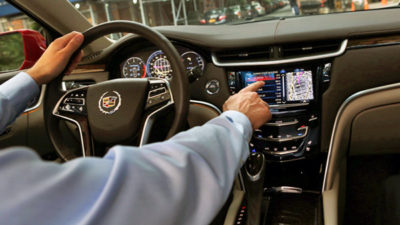
Information screens accessed through hand-controllers, such as BMW’s iDrive, which require a combination of tactile and visual attention to use, are in my opinion, safer and easier to operate than a typical touch-only screen.
(In the interest of full disclosure, my personal vehicle is equipped with BMW’s iDrive, so I’m fairly adept at using it.)
Nonetheless, when I spend a week in a test car with a touchscreen, I could scream. My finger seldom hits the icon accurately enough, or with just the right pressure, to effect the desired outcome. This angers the hell out of me and I feel like delivering a right jab to the damn thing…but of course I need to focus on the road.

As opposed as I may be to Big Brother intrusions, I think its high-time that government regulators looked at the data around distracted driving, and with that, start placing pressure on automobile manufacturers to eradicate touchscreens or begin simplifying technology and interfaces within vehicles.
The other option is for manufacturers to simply make all but the basic screen functions available to the driver only when the vehicle is stopped. The issue of distracted driving is much greater than that of a smart phone. Until all cars are completely autonomous, and I doubt that’ll ever be the case within my lifetime, automobile manufacturers need to help eliminate distracted-driving, not further enable it.



